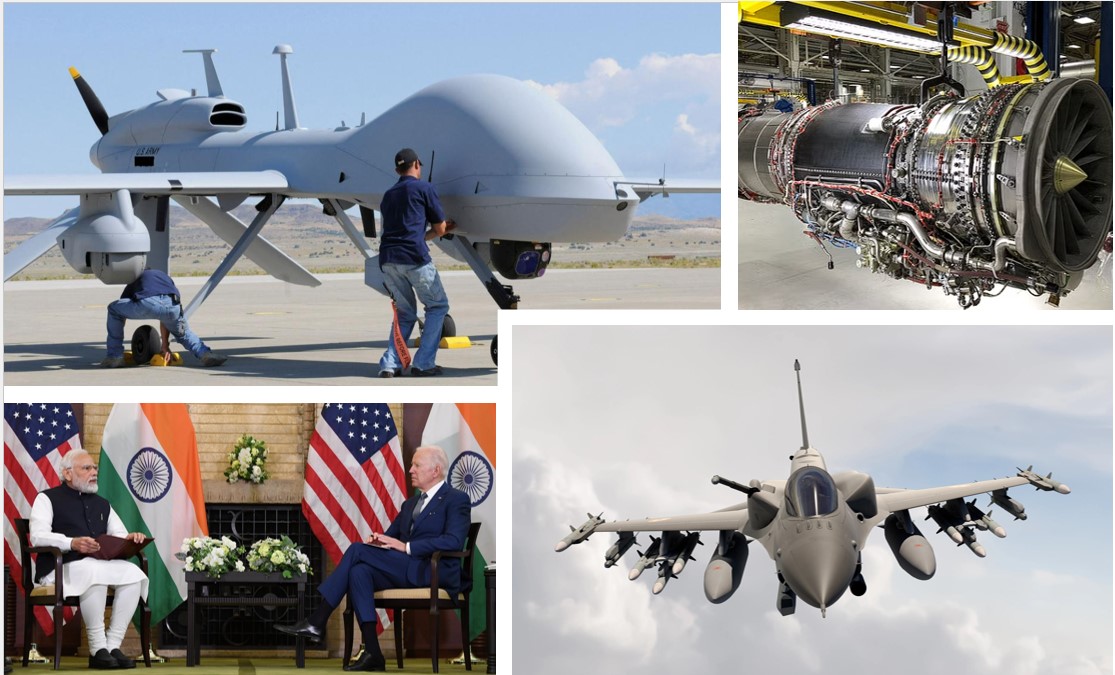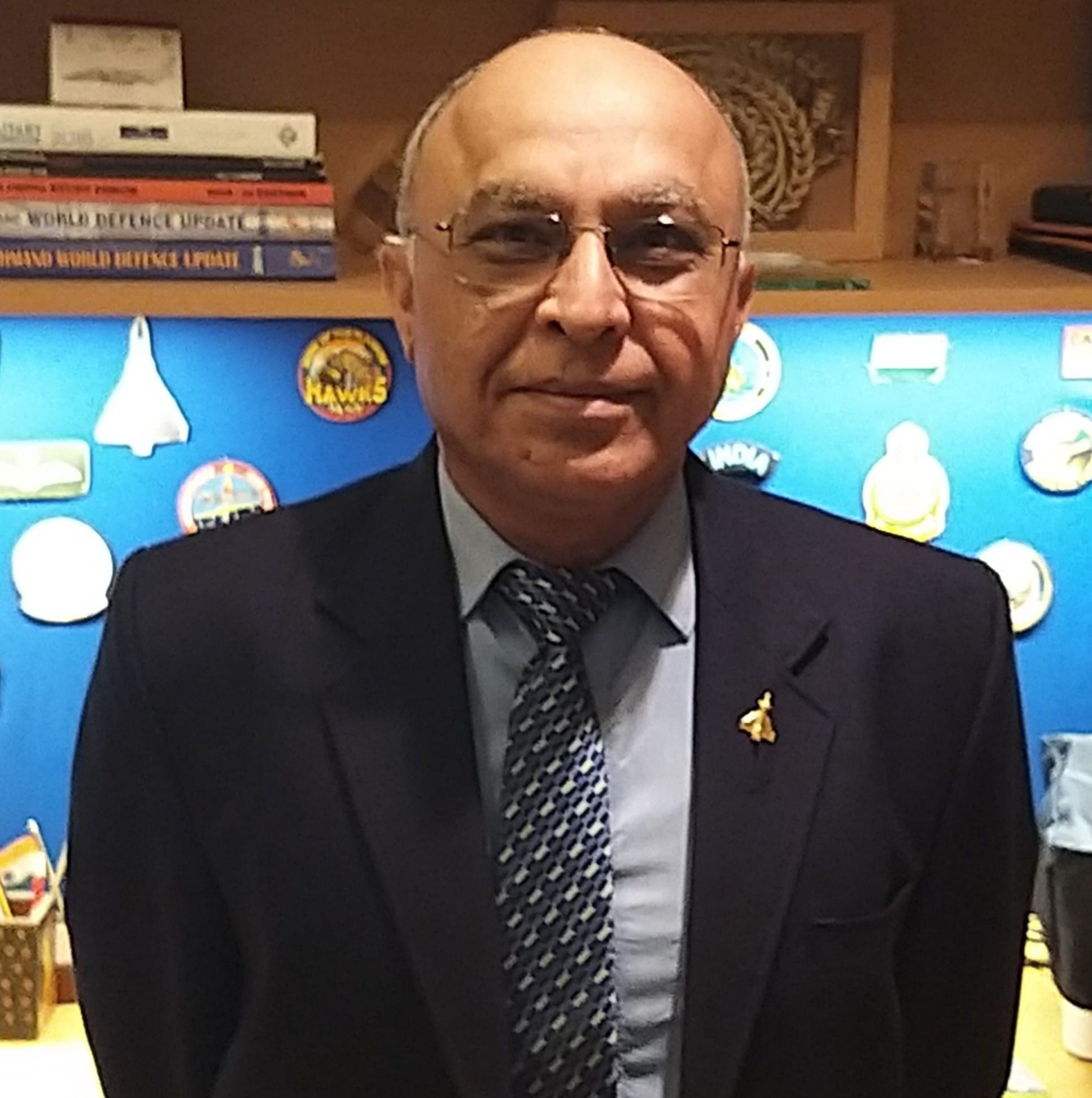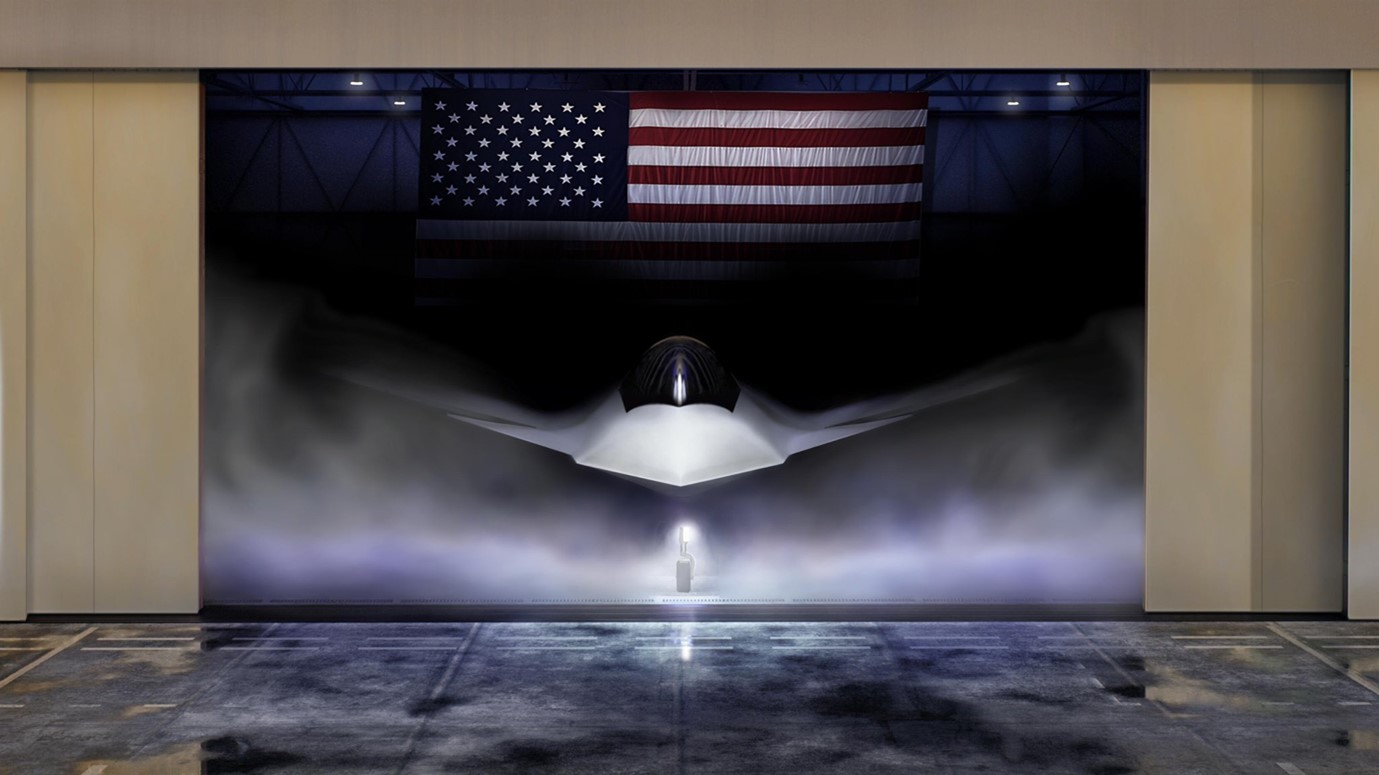
PM Modi’s Visit To USA: Deal Or No Deal For Fighter Aircraft And Aero-Engines?

“Both sides will identify opportunities for co-development of new technologies and co-production of existing and new systems and facilitate increased collaboration between defence start-up ecosystems of the two countries.”
Statement by the Indian defence ministry, post meeting between visiting US Defence Secretary Lloyd Austin and Indian Defence Minister Rajnath Singh.
Introduction
Prime Minister Narendra Modi is scheduled to travel to the US for an official state visit from June 21, 2023 to June 24, 2023. This will be his first state visit to the US during his nine-year-long reign as Prime Minister. The forthcoming visit has triggered a debate about the security and defence cooperation at large and the likelihood of a defence deal related to fighter aircraft and aero engines in particular. Similar speculation had started in the month of February this year during Aero India 2023, wherein the USA came in with a large military component including F-21, F-18, and F-35 aircraft besides the B-1 bomber.
The USA is making a bid for the fighter aircraft needs of the Indian Air Force and the Navy. On the other hand, India’s main objective is to fill in the existing gaps in the number of fighter aircraft and while doing so, provide a boost to the domestic defence industry by making in India and infusing technology. Defence Acquisition Council led by Defence Minister Rajnath Singh is scheduled to take up the deal for acquiring MQ-9 Reaper armed drones from the US during the meeting scheduled on 15 June 2023.
Grounds for the finalisation of some of the deals are being prepared prior to the visit of the Prime Minister. The 17th India-US Defence Policy Group met in Washington, USA, on May 17, 2023. It was co-chaired by Defence Secretary Giridhar Aramane and US Under Secretary of Defence for Policy Colin Kahl. This was followed by the visit of U.S. Defence Secretary Lloyd Austin to India on June 04, 2023. He met the Indian Defence Minister and the NSA to explore ways to further strengthen bilateral defence cooperation, especially in areas of transfer of critical technologies for the co-development of military hardware. During these visits, India and the US agreed on a roadmap for defence industry cooperation.
Challenges and Necessities
Prevailing Challenges. India is a major regional player and due to its unique geographical location and geo-political environment, it faces a collusive threat (from its two nuclear-powered inimical neighbours) with significant chances of military conflict. Therefore, her national interest dictates that the country be able to deter both her inimical neighbours from any military misadventure either singlehanded or collusively. Although land borders would continue to be the main reason for the dispute, the security of the IOR region would be a major security necessity. IAF would be required to offer options to meet India’s domestic and regional security requirements.
Air Threat. For a considerable time, the IAF enjoyed an edge in modern combat aircraft over its rivals – the Chinese People’s Liberation Army Air Force (PLAAF) and the Pakistan Air Force (PAF). This situation is changing with the PLAAF transforming and China investing heavily in aerospace Research and Development and aircraft manufacture. China has inducted its two home-grown stealth fighters (J-20 and J-31). Pakistan continues to be in collusion with China. PAF has inducted Chinese J-10 and JF-17 aircraft and its strength is on the rise. In such a scenario it is imperative that the deterrence value of the Indian Air Force is enhanced to match the impending air threat.
Indian Needs. India is in need of fighter aircraft both for its Air Force and the Navy.
- Indian Air Force. An Air Force needs fighter aircraft in adequate numbers to be combat-ready. IAF is deficient in fighter aircraft. The IAF today is down to about 30 odd fighter squadrons against the authorised strength of 42 squadrons. The required numbers may further go up taking into consideration the rapid increase in capabilities of the adversaries. There is an urgent need to fill this gap.
- Indian Navy. Indian Navy is in need of fighter aircraft for its aircraft carrier. Indian domestic programme of LCA (Navy) commenced in 2003 and the first prototype NP-1 was rolled out in July 2010 followed by flight tests in the subsequent year. In December 2016, Indian Navy decided to pull out from the N-LCA programme due to a long delay and a few technical reasons. The program was converted into a technology demonstrator, with the intention to utilise the experience gained from it to develop a TEDBF (Twin Engine Deck Based Fighter). In the interim Indian Navy needs aircraft for carrier operations.
Indian Approach
According to data published by the think tank that tracks weapons imports over a five-year period, India had the biggest percentage of the world’s arms imports in the past five years at 11% – SIPRI report 2023
The Indian approach is aimed at achieving self-reliance while maintaining the required minimum deterrence value, with a balanced force including both capability and capacity (i.e. quantity and quality). Relevant aspects are as follows: –
- Mitigation Plan. A drawdown mitigation plan does exist and is reviewed periodically. It essentially includes indigenous aircraft induction and speedy procurement of MRFA aircraft. It includes 4 squadrons of Tejas Mk1A already on order (likely to be built by 2025-27), 6 squadrons of Tejas Mark 2 aircraft (likely to be built by 2032), 6 squadrons of AMCA (likely to be built by 2035-36), and 6 squadrons (114 aircraft) of MRCA.
- Self-Reliance. The recent Ukraine conflict has reinforced the lesson that self-reliance is an absolute necessity as far as military power is considered. Indian Air Force fully supports Indigenisation. It has already inducted 40 LCA Mk I aircraft (20 in Initial Operational Clearance and 20 in Final Operational Clearance configuration). IAF has also placed an order for 83 LCA Mk 1A aircraft. Work is in progress for the development of LCA Mk2 and 5th generation Advanced Medium Combat Aircraft (AMCA).
- Make in India. The Government has taken several policy initiatives in the past few years and brought in reforms to encourage indigenous design, development, and manufacture of defence equipment, thereby promoting self-reliance in defence manufacturing & technology in the country. In all the new contracts, make in India with the Transfer of technology is being insisted upon.
- Aeroengine Technology. The aero engine is considered the most vital component of a jet aircraft. Few aviation companies possess the technology to produce aeroengines for fighter aircraft and there is a general reluctance to share this technology, forcing aspiring countries to develop their own following a long arduous process. India’s GTRE (Gas Turbine Research Establishment), part of DRDO started the project to develop an indigenous turbofan engine christened ‘Kaveri’ in 1986, as a part of the Light Combat Aircraft (LCA)- ‘Tejas’ project. It had been decided early in the LCA programme to equip the prototype aircraft with the General Electric F404-GE-F2J3 afterburning turbofan engine, but if the parallel Kaveri programme was successful, it was intended to equip the production aircraft with this indigenous engine. However, the Kaveri programme could not meet the necessary technical requirements or keep up with its envisaged timelines and was officially delinked from the Tejas programme in September 2008. DRDO has been seeking assistance from foreign manufacturers for the revival and success of the project.
Defence Deals, Expectations, and Prospects
The USA is looking at the lucrative Indian defence market and is also keen to deepen ties with India as a key counterweight to China’s dominance in the region. Deals under speculation are:-
- F-21 (Variant of the F-16 Block 70). A Proposal to procure 114 multi-role fighter aircraft by Indian Air Force has been in process for the last five years. Lockheed Martin has offered its F-21, a variant of the F-16 Block 70, claimed to be specially configured to meet the requirements of the Indian Air Force’s (IAF) MRFA programme. During the Aero India 2023, Lockheed Martin, unveiled the configuration of the F-21 (with advanced Electronics and technologies) offered to the Indian Air Force. It also announced the partnership with local company Tata to create TLMAL – Tata Lockheed Martin Aerostructures Limited – a joint venture that currently manufactures components for the F-16 supply chain and would be responsible for manufacturing the aircraft in India, should it win the MRFA competition.
- F/A-18 Super Hornet. The Indian Navy’s aircraft carrier, INS Vikramaditya, currently operates Mig-29K fighters. Indian Navy has been looking for a suitable carrier-borne aircraft for its second aircraft carrier. Earlier the LCA navy project was converted into a technology demonstrator and it was announced that the experience gained would be utilised to develop TEDBF – Twin Engine Deck-Based Fighter aircraft. Besides the domestic program, the IN has been looking at the import of aircraft for immediate needs. The choice of the (MRCBF) program to equip the INS Vikrant is between the twin-engine US Boeing F/18 E/F Super Hornet and the French Rafale Marine (M).
- Aero-Engines. India is also looking for suitable engines for Tejas MK-2. The discussions are on for the local manufacturing of the GE F414 engines in India under the technology-transfer mode and for the joint development and manufacture (Indian PSU Hindustan Aeronautics Limited and American firm General Electric) of a new engine variant.
- F-35 Lightning II/Joint Strike Fighter. Some speculation also started about the offer of this latest, highly advanced multi-role, supersonic, stealth fifth-generation fighter of the U.S. Air Force, due to its presence at the Aero India 2023. The aircraft may not be on offer and also its procurement does not conform to the Indian scheme of being self-reliant and pursuing its own fifth-generation fighter AMCA development program. In addition, there are issues related to affordability, production capability, and willingness to share the latest technology, etc.
Decision Dynamics. Expectations of a mega deal coming through during the Indian Prime Minister’s visit to the USA are very high. There are a large number of factors that would influence the outcome. Some of these are:-
- Diverse Inventory of the Indian Air Force. Indian Air Force has a diverse inventory of aircraft, causing a logistic nightmare. Adding another aircraft to it would add to the woes.
- The Extent of Technology Transfer. There is a general reluctance to share the latest technology by the defence manufacturing companies. Whereas India is looking for technology infusion into its defence industry.
- Sharing of Job Market. Any defence deal, besides monetary gain, creates employment opportunities. With the push for Make in India, willingness to share the opportunities would be an important factor.
- Past Sanctions and Trust. The United States had imposed economic and technological sanctions earlier on India. This not only slowed down technological progress to some extent but also created a trust deficit in the mind. It will take a considerable amount of magnanimity to get over it.
- Affordability. An affordable cost would be an overriding factor in the decision matrix.
- Ease of Doing Business. Both USA and India have certain rules and regulations which are restrictive in nature. These would have to be relaxed or exempted for the deals to go through.
Visit Expectations and Prospects. India wants global defence manufacturers to partner with Indian companies and produce arms and military equipment in India for local consumption as well as for exports. The USA has a clear understanding of Indian needs and is keen on keeping India in its camp. The deal regarding the General Electric GE-414 jet engines is likely to be concluded during the upcoming visit of the Prime Minister. USA may insist on a package deal including the F-21 and/or F-18 along with the aero engines. Personally, in my view, adding another fighter to the inventory of IAF is not desirable. Indian Navy could opt for F-18, however, with Rafale aircraft already in the inventory of IAF, Rafale(N) would be beneficial. The final contours of the deal would depend upon the factors listed above and the amount of give and take between the two countries.
********************************************************************************************************************
References:
- https://raksha-anirveda.com/aircraft-production-eco-system-a-pragmatic-approach-required/
- https://www.aljazeera.com/news/2023/6/5/india-us-agree-on-road-map-for-defence-industry-cooperation
- https://www.thehindubusinessline.com/news/india-us-pushahead-of-modis-us-visit-two-countries-pushing-for-foundational-defence-agreements/article66866358.ece
- https://theprint.in/defence/rajnath-austin-meet-sets-stage-for-mega-jet-engine-deal-when-modi-visits-us-focus-now-on-emerging-tech/1612729/
- https://55nda.com/blogs/anil-khosla/2023/04/11/iafs-fighter-squadron-drawdown-and-the-mitigation-plan/
- https://chanakyaforum.com/decoding-us-presence-at-aero-india-2023-business-signalling/
- https://en.wikipedia.org/wiki/GTRE_GTX-35VS_Kaveri
- https://www.indiatoday.in/india/story/indigenous-combat-jets-and-kaveri-turbofan-engine-all-about-iafs-new-aerospace-plan-2380107-2023-05-16
- https://www.aviacionline.com/2023/05/el-motor-ge-f414-del-futuro-hal-tejas-mk-2-seria-fabricado-en-la-india-gracias-a-un-acuerdo-entre-washington-y-nueva-delhi/
Disclaimer
The opinions expressed in this article are the author’s own and do not reflect the views of Chanakya Forum. All information provided in this article including timeliness, completeness, accuracy, suitability or validity of information referenced therein, is the sole responsibility of the author. www.chanakyaforum.com does not assume any responsibility for the same.
Chanakya Forum is now on . Click here to join our channel (@ChanakyaForum) and stay updated with the latest headlines and articles.
Important
We work round the clock to bring you the finest articles and updates from around the world. There is a team that works tirelessly to ensure that you have a seamless reading experience. But all this costs money. Please support us so that we keep doing what we do best. Happy Reading
Support Us















POST COMMENTS (0)